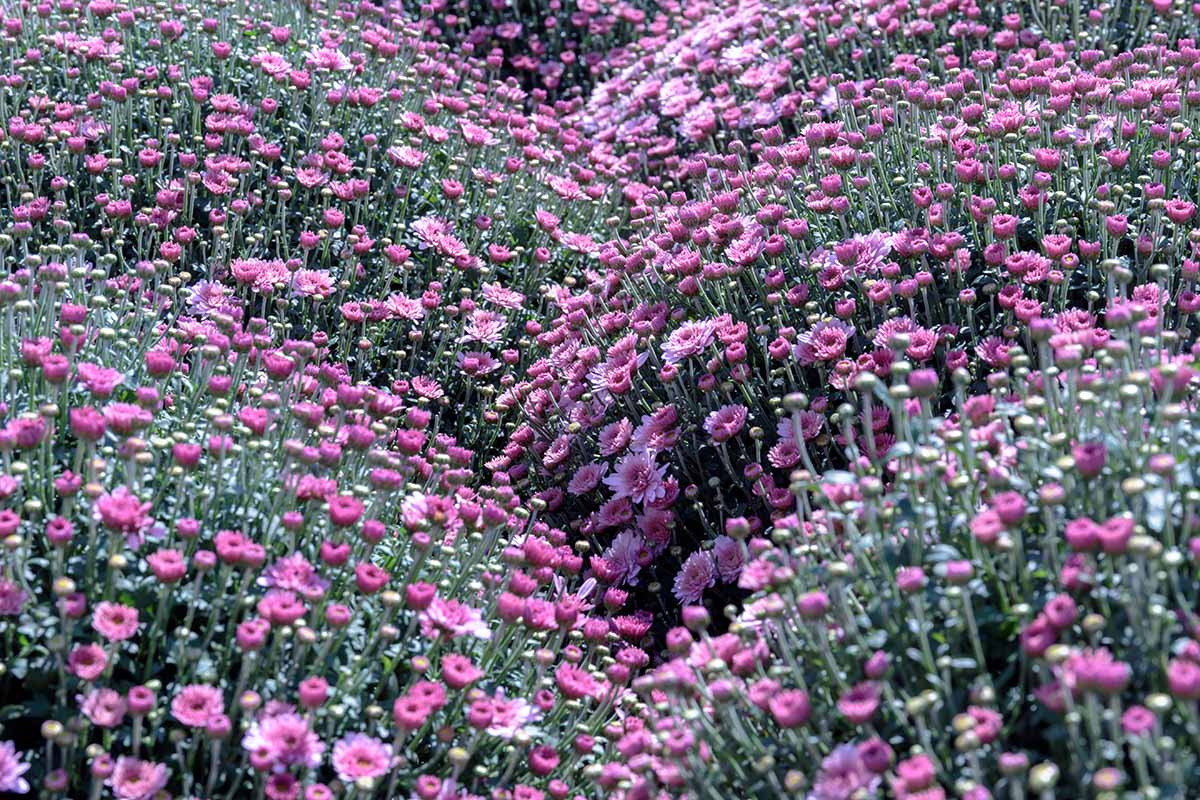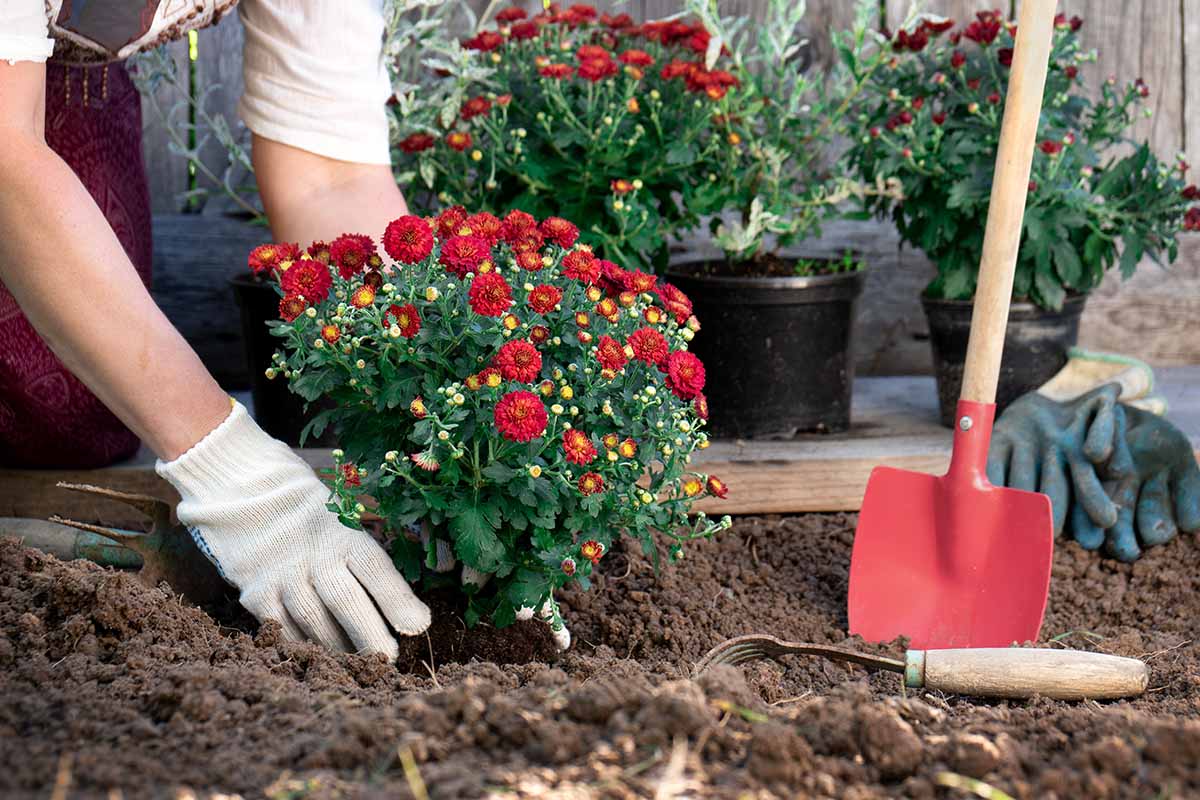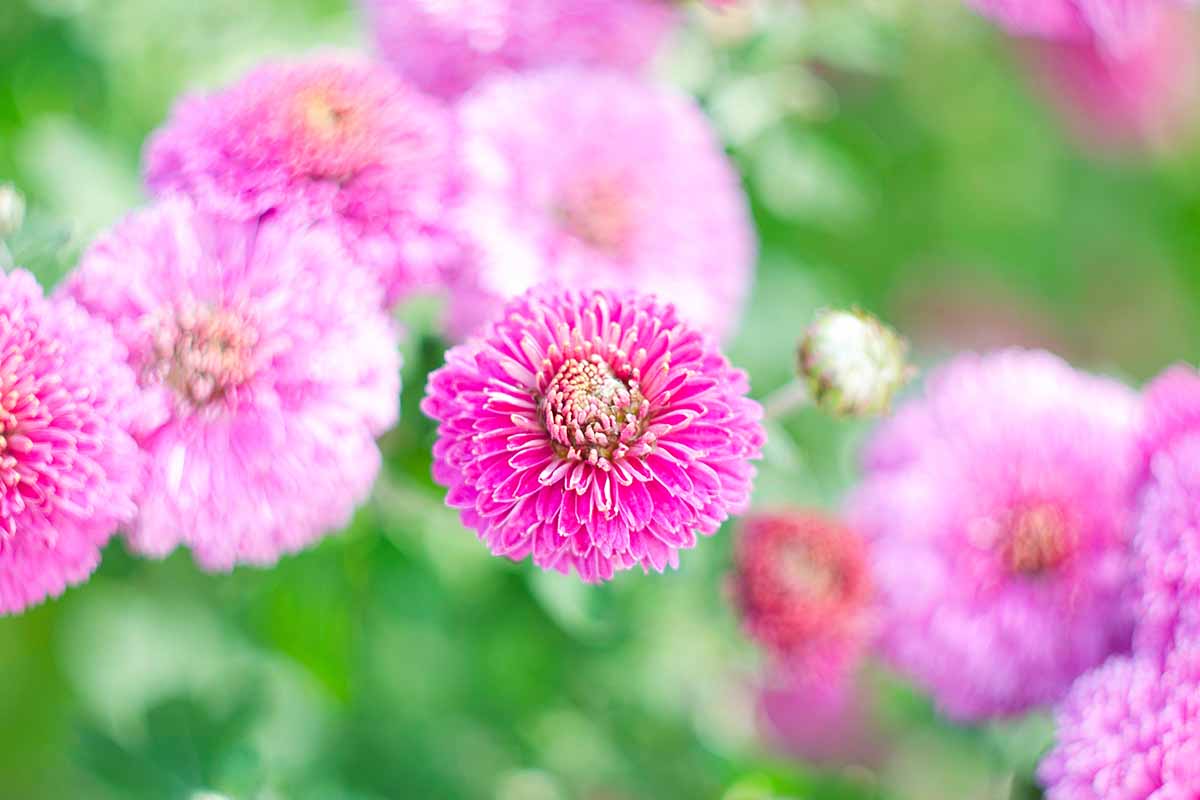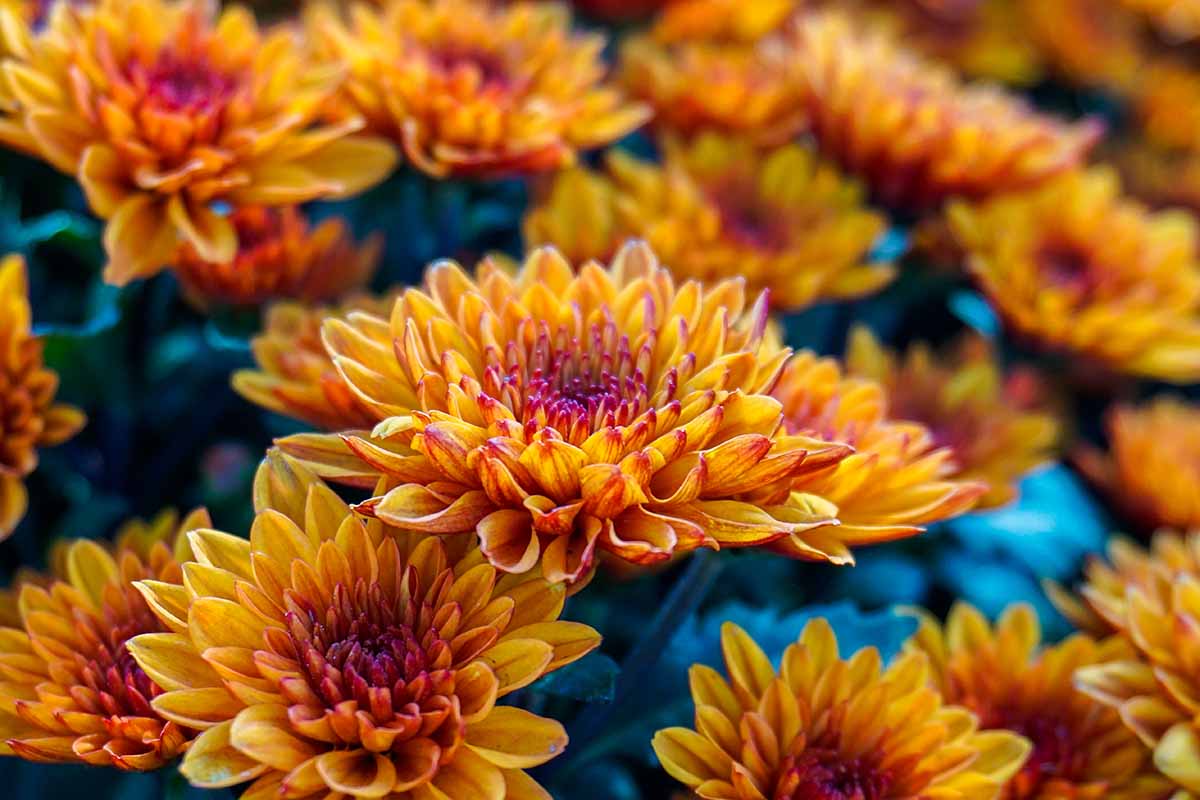How Long do Chrysanthemums Last?
Some plants are often regarded as short-lived wonders in North American gardens, sticking around for a good time but not a long one. And chrysanthemums are one of those plants.
We buy them by the bushelful in the fall when they pop up all over the place at grocery stores and nurseries, and then we toss them out when the first hard frost turns them to mush.


We link to vendors to help you find relevant products. If you buy from one of our links, we may earn a commission.
But mums can actually stick around far longer than a single season. You don’t have to kiss them goodbye just because Old Man Winter is coming around the bend.
And this isn’t just a plant for those living in warm regions that never see a touch of frost – even gardeners in chillier regions can enjoy the big, bountiful blossoms year after year.
If you’re ready to dive into the life cycle of mums, here’s what you can expect coming right up:
What You’ll Learn
Don’t you just love finding ways to save time and money in the garden? Instead of doling out cash each year to add some fall color, you can just help your plants to return year after year instead.
How Long Do Mums Live?
Many of us enjoy our mums for a single summer and fall as annuals and then toss them out when winter arrives. But chrysanthemums are actually short-lived perennials.
Florist mums are hardy down to Zone 7 and garden mums down to Zone 5, though some are happy even in the colder climate of Zone 3.


Florist or exhibition types (Chrysanthemum x grandiflorum), which are grown to create cut flower arrangements, have a shorter lifespan because they put so much energy into blooming. They weren’t bred to survive the winter as perennials.
Garden or hardy types (Chrysanthemum × morifolium) can live for four or five years.
But there’s more to the story. Garden types are liberal self-seeders, so even once a plant has reached the end of its lifespan, if you let it do its thing, it will sow seed on its own and you’ll have lots of new plants popping up the following spring.
In that way, chrysanthemums can live a long, long time.
How Do I Make Sure They’ll Come Back?
When you put mums into the ground in the summer or fall for a hit of late-season color, you aren’t giving them much time to become established before the cold weather arrives.
Also, the plants you find for sale in the fall are already typically in full bloom, which means they won’t have a lot of energy left for growing healthy roots to get them through the winter.


If you want them to return, plant your flowers in the spring. This gives them oodles of time to become established.
If they have any blossoms when you bring them home, cut these off to conserve energy and encourage root development. Provide normal care for new transplants until the fall, and check out our growing guide for tips.
Don’t offer them any fertilizer for the month prior to the first predicted frost date in your area. Once the first frost arrives, cut off any leftover blossoms.
So long as your chrysanthemum is rated for your USDA Hardiness Zone, you shouldn’t have to do anything else. But if you want to give your plant a little extra protection from the cold, you can do that.
Mulch and conifer branches are common options. And our guide to overwintering mums has additional tips.
How to Save Seeds
To save the seeds from your plant so you can sow them wherever you want in your garden, wait until late fall when the seed heads have fully matured.
You’ll know it’s time when the center of each faded blossom looks brown and feels dry. By that point, the petals and even the stems will likely be dry as well.


Rub or pull the petals off and you’ll be left with a brown ball at the center. Rub the seeds out of the center and gently blow on them to remove any petals or chaff that you missed.
You can sprinkle the seeds back into the garden right away or place them in an envelope, label it, and store them in a cool, dark place. The seeds should stay viable for up to two years.
Help Your Mums to Live a Long, Happy Life
Tossing out plants that haven’t reached the end of their lifespan wastes money, environmental resources, and your precious time.
If a plant can grow as a perennial, why not let it? Mums will provide years of pleasure with a little help and encouragement from you if you let them stay in the garden.


What are your favorite types of chrysanthemums to grow? Do you like the unique quilled variety, classic spider blooms, or those striking pompons? Let us know in the comments section below.
Now that you know you can keep these beauties around for years, you might be interested in learning more about how to grow flowers in your garden. Check out these guides next:
